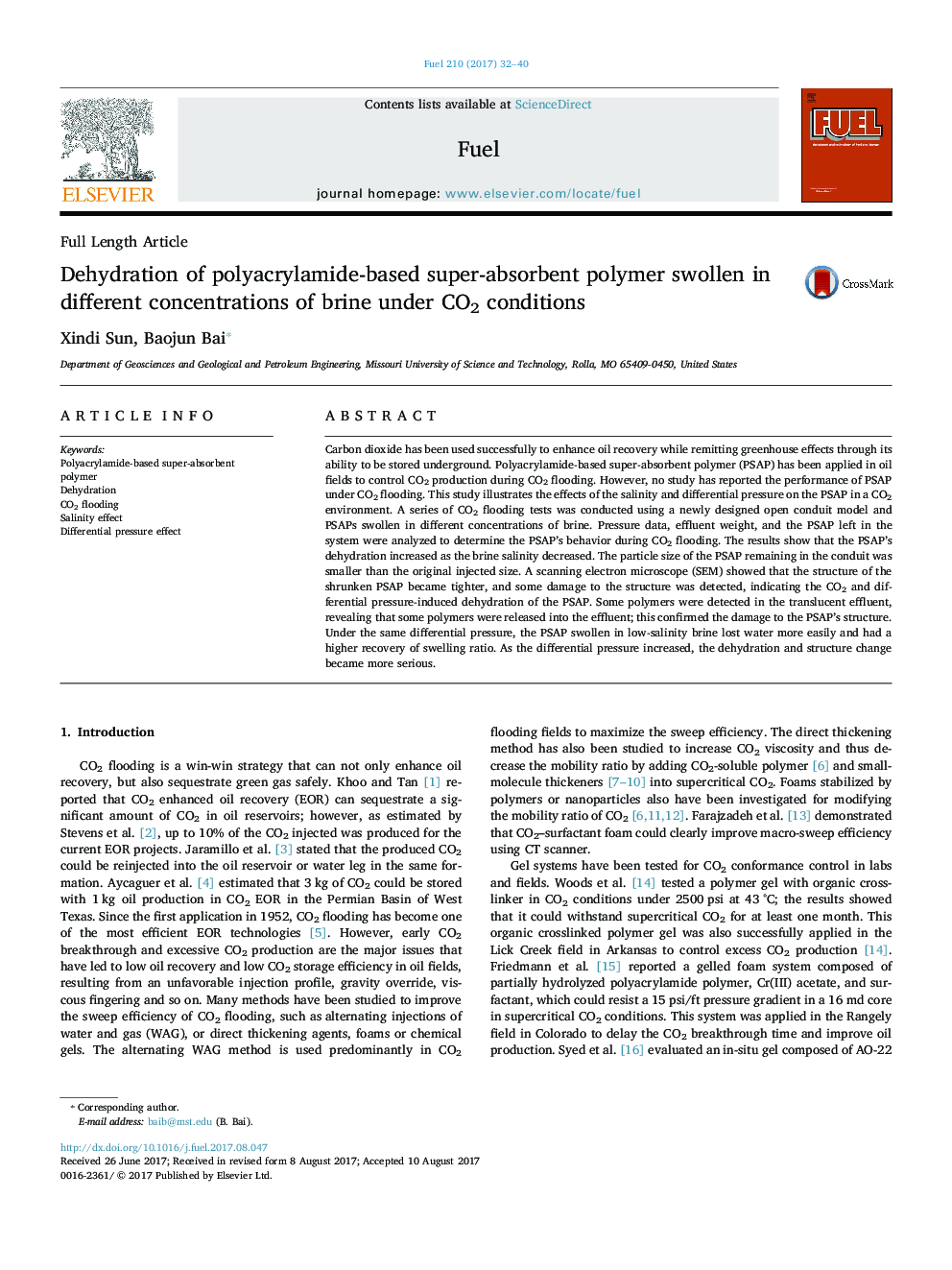| Article ID | Journal | Published Year | Pages | File Type |
|---|---|---|---|---|
| 4768298 | Fuel | 2017 | 9 Pages |
Abstract
Carbon dioxide has been used successfully to enhance oil recovery while remitting greenhouse effects through its ability to be stored underground. Polyacrylamide-based super-absorbent polymer (PSAP) has been applied in oil fields to control CO2 production during CO2 flooding. However, no study has reported the performance of PSAP under CO2 flooding. This study illustrates the effects of the salinity and differential pressure on the PSAP in a CO2 environment. A series of CO2 flooding tests was conducted using a newly designed open conduit model and PSAPs swollen in different concentrations of brine. Pressure data, effluent weight, and the PSAP left in the system were analyzed to determine the PSAP's behavior during CO2 flooding. The results show that the PSAP's dehydration increased as the brine salinity decreased. The particle size of the PSAP remaining in the conduit was smaller than the original injected size. A scanning electron microscope (SEM) showed that the structure of the shrunken PSAP became tighter, and some damage to the structure was detected, indicating the CO2 and differential pressure-induced dehydration of the PSAP. Some polymers were detected in the translucent effluent, revealing that some polymers were released into the effluent; this confirmed the damage to the PSAP's structure. Under the same differential pressure, the PSAP swollen in low-salinity brine lost water more easily and had a higher recovery of swelling ratio. As the differential pressure increased, the dehydration and structure change became more serious.
Related Topics
Physical Sciences and Engineering
Chemical Engineering
Chemical Engineering (General)
Authors
Xindi Sun, Baojun Bai,
